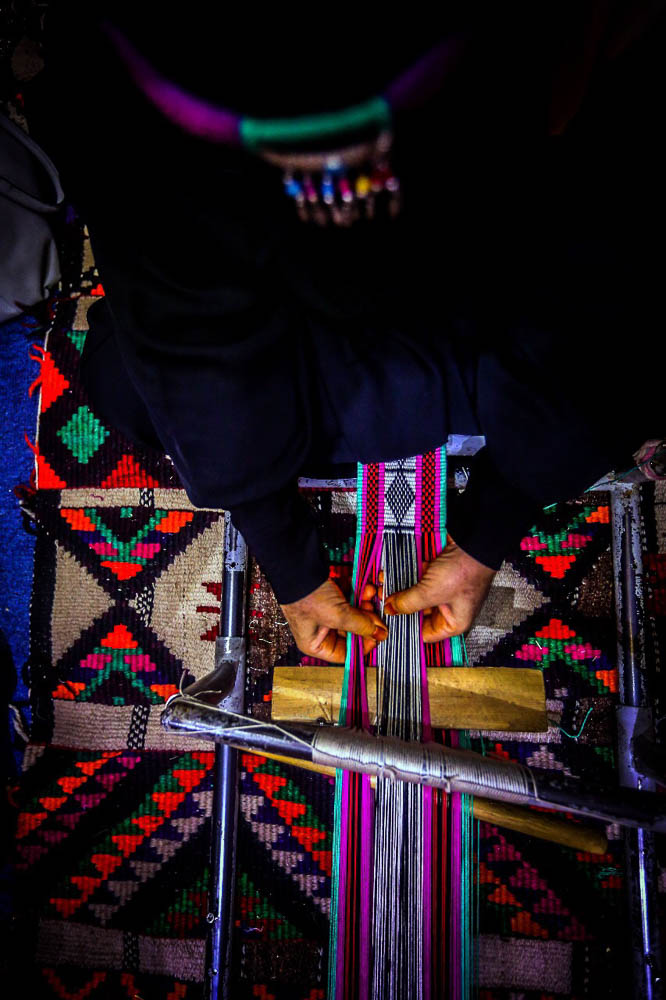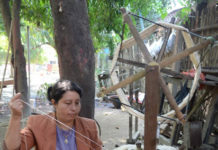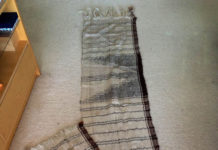Sadu is a fabric made from wool using the weaving method. It can be found in nomadic communities and communities with nomadic background, so it can be found in the Gulf countries, Jordan, Sinai, western Iraq and eastern Syria.
Sadu is mainly used for tents because of its high resistance to water and its ability to cool down the temperature if water is sprayed on the sadu. Other traditional uses are for furniture, bags, pouches, camel ornaments and carpets. Nowadays, the main purposes are the same, however, it has expanded to cover a wide range of ideas not far from the traditional purposes in most cases especially in Saudi Arabia such as wallets and book and journal covers. Sadu weaving is mainly done by women because in the past it was a woman’s craft.
Traditionally wool from camels and sheep is used to make the threads and then natural dye is used for colouring. Nowadays, the use of factory-made threads is widespread. These strings produce a softer more vibrant product, but not necessarily high quality. The best dye according to the older generation of craftswomen comes from Iraq, however, alternatives can be found due to the difficulty of acquiring the dye from Iraq.
The process of making a sadu piece is as follows. Fluffing involves having the wool cleaned and prepared by rubbing it between two flat comb-like tool called mekdash in order. After the fluffing, the wool is made into strings with a spindle called meghzal. Colouration is added at this stage, but some add the colouration after the fluffing process. Weaving is then carried out using a complex tool called nool. The base cotton threads are placed vertically and the wool threads are woven between the cotton threads horizontally guided by wooden shuttle. Traditionally a deer horn will be used to guide and manage the strings. And the skill of the craftsperson at this stage is displayed by the level of the design, weaving quality and accuracy. Then in the finishing stage, the cloth is stitched and sewn together to form the final product. Tassels can be added. Simple stitching is used in the case of tents, but more decorative stitching is normally used in all other products.
Sadu has a healthy market throughout Saudi Arabia, although the demand for traditional pieces is lower than innovative pieces. some old markets in major cities have shops that sell sadu products. However, if one wishes to find a 100% handcrafted sadu, wants a custom made product or more innovative products, then the alternative is to locate a craftswoman who can be found in festivals and through personal contacts.





